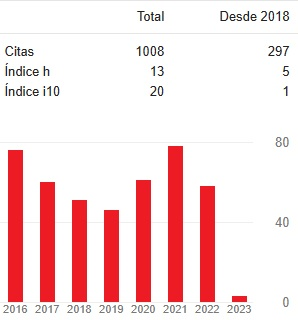International Comparative Evolution of Railway Networks in the 19th Century: An Analysis of their Extent, Design, Financing, and International Connectivity
DOI:
https://doi.org/10.51743/cih.491Keywords:
Economic History, Railways, Railway Development, 19th century, Railway Networks, Transportation InfrastructureAbstract
This article conducts a comparative analysis of the development of railway networks in various countries during the 19th century, focusing on four key aspects: their geographical extent, structural design, sources of funding, and degree of international connectivity. A discernible pattern emerges in the evolution of these railway systems. In the initial stages, constructions were oriented towards meeting specific transportation demands, with lines erected to serve significant economic or administrative-political interests. Towards the end of the century, secondary importance branch lines began to be laid with the intention of extending the railway network to less economically developed peripheral regions. This model is replicated in both privately funded and state-involved railway systems, underscoring the influence of economic and political factors in the design of railway networks.
Downloads
Global Statistics ℹ️
|
148
Views
|
151
Downloads
|
|
299
Total
|
|
References
BARQUÍN, R. (2016). Castillos en el aire, caminos de hierro en España: La construcción de la red ferroviaria española. Revista de la historia de la economía y de la empresa, 10, 289-317.
BONGAERTS, J. (1985). Financing Railways in the German States, 1840-1860. A Preliminary View. Journal of European Economic History, 14(2), 331-345.
CAMERON, R. (1961). France and the Economic Development of Europe (1800-1914): Conquests of Peace and Seeds of War. Princeton University Press.
CARON, F. (1983). France. En Railways and the Economic Development of Western Europe, 1830-1914. St. Martin’s Press.
CARON, F. (1997). Historie des Chemins de Fer en France. Fayard.
CARRERAS, A. (1999). Los ferrocarriles en Europa: Algunas perspectivas históricas. En Siglo y medio del ferrocarril en España, 1848-1998: Economía, industria y sociedad. Fundación de los ferrocarriles españoles.
CASARES, A. (1973). Estudio histórico-económico de las construcciones ferroviarias españolas en el siglo XIX. Instituto iberoamericano de desarrollo económico.
CASSON, M. (2009). The World´s First Railway System. Enterprise, Competition, and Regulation on the Railway Network in Victorian Britain. Oxford University Press.
CHANDLER, A. (2008). La mano visible. La revolución de la gestión de la empresa norteamericana. ESADE.
CICCARELLI, C., & Groote, P. (2017). Railway endowment in Italy´s provinces, 1839-1913. Rivista di Storia Economica, XXXIII(1), 45-88.
CICCARELLI, C., & NUVOLARI, A. (2016). Technical Change, Non-Tariff Barriers, and the Development of the Italian Locomotive Industry, 1850-1913. Quaderni di Storia Economica, 38.
CLEVELAND-STEVENS, E. (1915). English Railways. Their Develepment and Their Relation to the State. George Routledge and Sons.
CUCCORESE, H. (1969). Historia de los ferrocarriles en la Argentina. Ediciones Macchi.
CUÉLLAR, D. (2010). Et Stephenson dit “Non”: Capitaux britanniques et chemins de fer en Espagne. Économies et Sociétés. Historie Économique Quantitative, XLIV(6), 949-986.
DE BLOCK, G. (2011). Designing the Nation. The Belgian Railway Project, 1830–1837. Technology and Culture, 52(4), 703-732.
DUDLEY BAXTER, R. (1866). On Railway Extension and its Results. Journal of the Statistical Society of London, 29(4), 549-595.
ELTON, A. (1945). British Railways. Collins.
ESTEVES, R., & GEISLER MESEVAGE, G. (2021). Private Benefits, Public Vices: Railways and Logrolling in the Nineteenth-Century British Parliament. The Journal of Economic History, 81(4), 975-1014.
FENOALTEA, S. (1983). Italy. En Railways and the Economic Development of Western Europe, 1830-1914 (pp. 49-96). St. Martin’s Press.
FREMDLING, R. (1983). Germany. En Railways and the Economic Development of Western Europe, 1830-1914 (pp. 121-142). St. Martin’s Press.
GARCÍA RAYA, J. (2006). Cronología básica del ferrocarril español de vía ancha. IV Congreso Historia Ferroviaria.
GIUNTINI, A. (1999). El ferrocarril italiano, desde sus orígenes hasta hoy. En Siglo y medio del ferrocarril en España, 1848-1998: Economía, industria y sociedad. Fundación de los ferrocarriles españoles.
GOMES, G., & GOMES, R. M. (2006). Os Caminhos de Ferro Portugueses 1856-2006. Comboios de Portugal.
GONJO, Y. (1972). Le « plan Freycinet », 1878-1882: Un aspect de la « grande dépression» économique en France. Revue Historique, 248(1), 49-86.
HEINZE, W., & KILL, H. (1988). The Development of the German Railroad System. En The Development of Large Technical Systems (pp. 105-134). Campus.
HORNUNG, E. (2015). Railroads and Growth in Prussia. Journal of the European Economic Association, 13(4), 699-736.
HYLTON, S. (2007). The Grand Experiment. The Birth of the Railway Age: 1820-45. Ian Allan.
JUSTO, M. (1991). Historia de los ferrocarriles de la provincia de Buenos Aires 1857-1886. Lumiere.
JUSTO, M., & WADDELL, J. (Eds.). (2007). Nueva historia del ferrocarril en la Argentina. 150 años de política ferroviaria. Lumiere.
KIRCHBERG, P. (1993). Die Entwicklung des Eisenbahnnetzes in Deutschland von der Reichsgründung bis zur Gegenwart. ICOMOS – Hefte des Deutschen Nationalkomitees, 9, 7-18.
LAFFUT, M. (1983). Belgium. En Railways and the Economic Development of Western Europe, 1830-1914 (pp. 203-222). St. Martin’s Press.
LIST, F. (1833). Über ein Sächsisches Eisenbahn-System als Grundlage Eines Allgemeinen Deutschen Eisenbahn-Systems.
LÓPEZ DEL AMO, F. (1990). Ferrocarril, ideología y política ferroviaria en el proyecto liberal argentino (1852-1916). CEDEAL.
MAGGI, S. (2003). Le ferrovie. Il Mulino.
MARTINS, J. P., BRION, M., DE SOUZA, M., LEVY, M., & AMRORIM, Ó. (1996). O Caminho de Ferro Revisitado. O Caminho de Ferro em Portugal de 1856 a 1996. Edição dos Caminhos de Ferro Portugueses.
MENÉNDEZ, F., & CORDERO, R. (1978). El sistema ferroviario español. En Los ferrocarriles en España 1844-1943: Vol. I. Servicio de Estudios del Banco de España.
MERGER, M. (1999). Los ferrocarriles franceses desde sus orígenes a nuestros días: Evolución del marco jurídico e institucional. En Siglo y medio del ferrocarril en España, 1848-1998: Economía, industria y sociedad. Fundación de los ferrocarriles españoles.
MITCHELL, B. R. (1962). Abstract of British Historical Statics. Cambridge University Press.
MITCHELL, B. R. (1992). International Historical Statics Europe 1750-1988. Stockton Press.
MOESCHL, J. R. (2002). Eisenbahnen in Deutschland 1835-1885 [Map]. IEG-MAPS · Server für digitale historische Karten. https://www.ieg-maps.uni-mainz.de/mapsp/mapebga0.htm
PALAU, F., & PALAU, M. (1995). Le rail en France. Les 82 premières lignes 1828-1851. F. et M. Palau.
RIBEILL, G. (1993). La révolution ferroviaire. La formation des compagnies de chemins de fer en France (1823-1870). Belin.
RODRÍGUEZ CARRASCO, Á. (1998). El ferrocarril en la cuenca del Plata. En Historia de los ferrocarriles de Iberoamérica (1837-1995). Fundación de los ferrocarriles españoles.
SATCHELL, M., WRIGLEY, E. A., SHAW-TAYLOR, L., YOU, X., & MARTÍ-HENNEBERG, J. (2023). 1851 England, Wales and Scotland Rail Lines [Map]. UK Data Archive.
SCHRAM, A. (1997). Railways and the formation of the italian state in the nineteenth century. Cambridge University Press.
SCHWARTZ, R., GREGORY, I., & THÉVENIN, T. (2011). Spatial History: Railways, Uneven Development, and Population Change in France and Great Britain, 1850–1914. Journal of Interdisciplinary History, 42(1), 53-88.
SHAW-TAYLOR, L., & YOU, X. (2018). The Development of the Railway Network in Britain 1825–1911. En The Online Historical Atlas of Transport, Urbanization and Economic Development in England and Wales c.1680–1911. University of Cambridge. https://www.campop.geog.cam.ac.uk/research/projects/transport/onlineatlas/railways.
SILVEIRA DA SILVA, H. J. (2012). A política ferroviaria nacional (1845-1899). Universidad de Oporto.
SIMMONS, J. (1991). The Victorian Railways. Thames & Hudson.
SMITH, B. (2020). Le dessin des frontières, des côtes et de l’hydrographie utilise des données issues des bases Geofla 2016 et EGM 2020 [Map]. IGN. https://commons.wikimedia.org/wiki/File:Railway_map_of_France_-_animated_-_fr_-_medium.gif
STOVER, J. (1976). American Railroads. Midway Reprint.
STOVER, J. (1999). The historical atlas of the american railroads. Routledge.
TATFORD, B. (1945). The Story of British Railways. Sampson Low, Marston & Co.
TAYLOR, G. (1989). The transportation revolution, 1815-1860. Routledge.
THOMAS, W. (2006). Railroad System, United States [Map]. Standford Libraries.
TORTELLA, G. (1973). Los orígenes del capitalismo en España. Tecnos.
TURNOCK, D. (1998). A historical geography of railways in Great Britain and Ireland. Routledge.
VV.AA. (1963). Historie des chemins de fer en France. Les Presses Modernes.
WEBER, E. (1976). Peasant into Frenchmen. The Modernization of Rural France, 1870-1914. Standford University Press.
WEBER, W. (1992). Die Entstehung des deutschen Eisenbahnnetzes. En Eisenbahn und Denkmalpflege (pp. 16-20).
WEIGELT, H. (1985). Epochen der deutschen Eisenbahngeschichte. Hestra Verlag.
Downloads
Published
How to Cite
Issue
Section
License
Copyright (c) 2025 CUADERNOS DE INVESTIGACIÓN HISTÓRICA

This work is licensed under a Creative Commons Attribution-NonCommercial 4.0 International License.
The Fundación Universitaria Española publishing house preserves the patrimonial rights (copyright) of published works, and encourages and allows their reuse. The works are published in the electronic edition of the journal under a license “Creative Commons Atribución/Reconocimiento-NoComercial 4.0 Licencia Pública Internacional — CC BY-NC 4.0”, and can be copied, used, disseminated, transmitted and publicly exhibited, provided that : a) the authorship and original source of its publication is cited (journal, publisher and URL of the work); b) are not used for commercial purposes; c) the existence and specifications of this license of use are mentioned.
The author / s partially transfer the property rights (copyright) of this work to the Fundación Universitaria Española (Spain) (NIF: G28433670), for the printed and online editions.
It also declares to have respected the ethical principles of research and to be free from any conflict of interest.
«C.I.H.» encourages the authors and the scientific community to the maximum promotion and dissemination of the works in their final version through:
1) Your list of contacts (emails) and social networks (Facebook, Twitter, LinkedIn ...).
2) Institutional repository of your University and public repositories (Mendeley, Cosis ...).
3) Scientific social networks (ResearchGate, Academia.edu, Kudos ...).
4) Personal or institutional website, blog, etc.
5) Google Scholar, ORCID, ResearchID, ScopusID, Dimensions, PlumX ...
6) Printed copies purchased directly and sent to specialists for reading and subsequent citation if appropriate.
For the nomination of future articles by authors of "C.I.H.", the impact of previous works will be taken into account, so that those with citation higher than the annual average of the journal will be preferred.












2.jpg)
















1.png)
1.png)

1.png)


.png)
.png)

.png)
1.png)
1.png)
